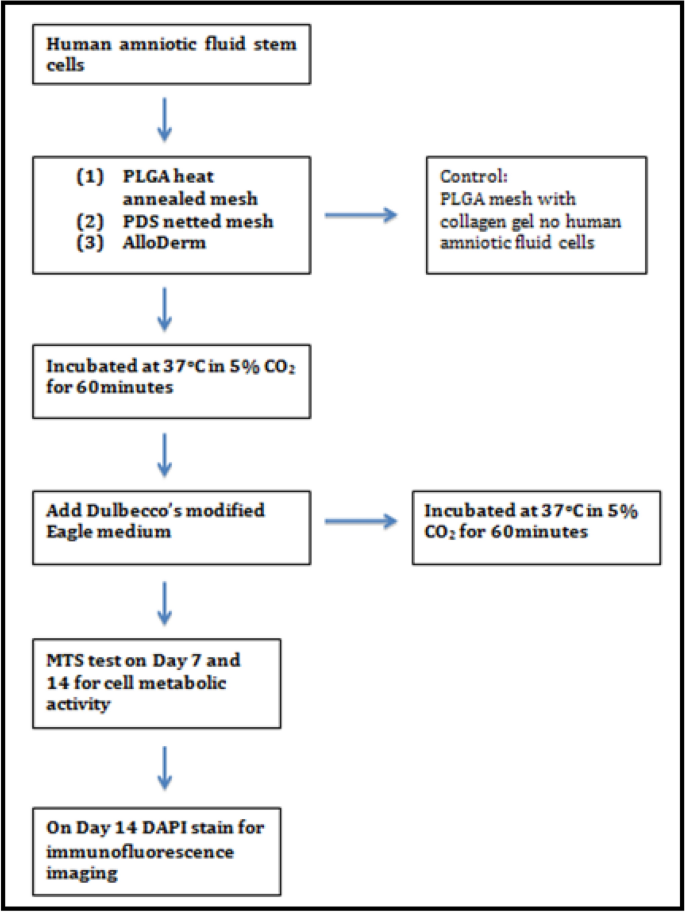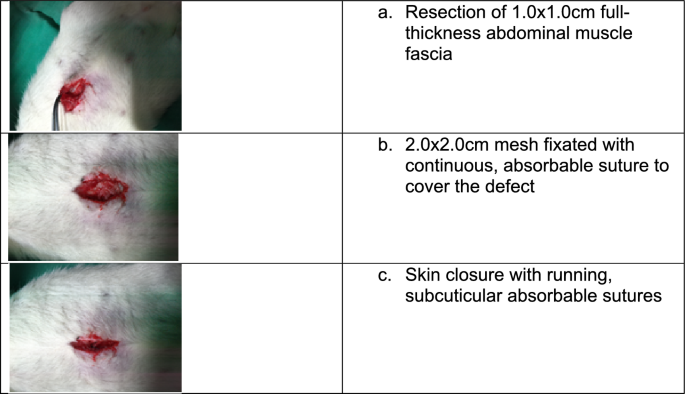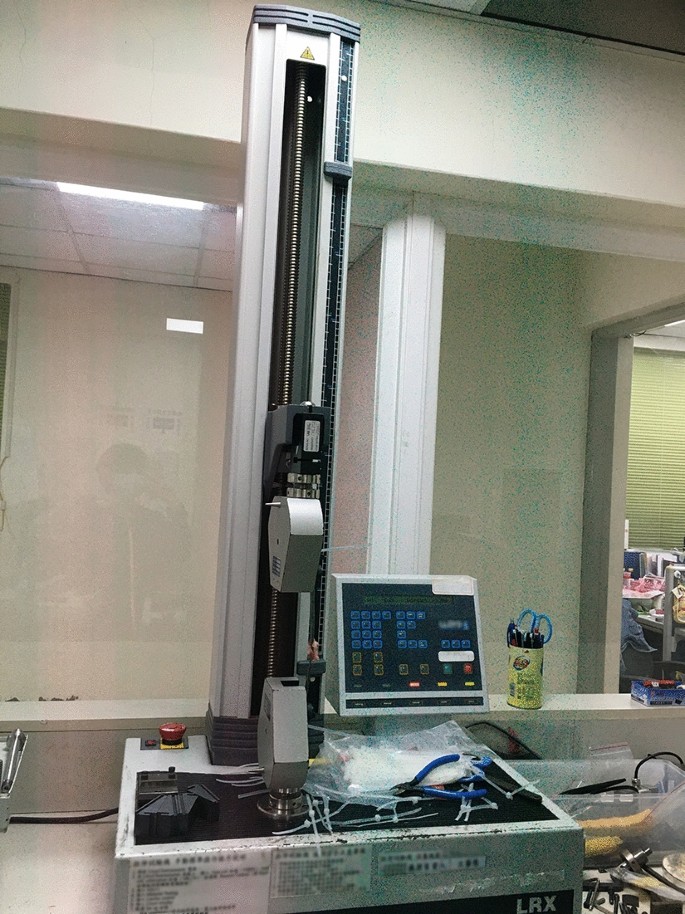Ethical approval
Experimental protocols and procedures were approved by Chang Gung Memorial Hospital’s Institutional Animal Care and Use Committee (No. 2019062002), Institutional Board Review (IRB: 201800954B0) and funded by the National Science and Technology Council Grants (MOST 107-2314-B-182A-103-). The study period took place from August 1st, 2018 to January 31st, 2020.
All procedures involving humans were carried out in accordance with relevant guidelines and regulations, and approved by Institutional Board Review Chang Gung Memorial Hospital. Informed consent was obtained from all participants/donor.
All experimental procedures were performed under the supervision of a licensed veterinarian, in a manner consistent with the regulations of the National Institute of Health of Taiwan. All animal related procedures were approved by the Institutional Animal Care and Use Committee of Chang Gung Memorial Hospital (IACUC Approval No.: CGMH2019062002). All methods involving animals are reported in accordance with ARRIVE guidelines.
Isolation and characterization of hAFSC for transplantation
The hAFSCs were obtained from freshly collected amniotic fluid by routine amniocentesis from healthy pregnant donors at 15–20 gestational weeks. Cells were cultured in StemPro® MSC Serum free medium supplemented with 10% fetal bovine serum (Invitrogen, Carlsbad,CA) and incubated at 37 °C with 5% carbon dioxide. Culture medium was changed every 3–4 days. The specific surface antigens of hAFSCs were characterized using flow cytometry analyses. The cultured cells were trypsinized and stained with phycoerythrin (PE)-conjugated antibodies against CD90 (BD PharMingen,CA). The cells were analyzed using the Calibur flow cytometer (Becton Dickinson, Heidelberg, Germany). Passage 4 to 6 hAFSCs were collected and prepared to a final concentration of 3 × 106 cells/0.3 mL Phosphate Buffer Solution (PBS). Thereafter, 3 × 106 hAFSCs were seeded on a sterile mesh-scaffold and cultured for 3 days prior transplantation. This is accordance to the previous work by Liang et al.12.
In vitro and in vivo study: mesh and hAFSC
Three types of absorbable materials were compared, comprising AlloDerm RTM; PLGA mesh (VICRYL®) and PDS mesh. The characteristic of each mesh is displayed in Table 1. Cell line from amniotic fluid stem cells was cultivated with basic fibroblast growth (bFGF). To measure the cell’s ability to proliferate, EdU Assay (Click-iT®EdU Assay, Invitrogen, Life Technologies Corporation, Carlsbad, CA, USA) is incubated with hAFSC, and meshes-harvested with hAFSc. EdU Assay (5-ethynyl-2’-deoxyuridine) works as a nucleoside analog of thymidine and is incorporated into DNA during active DNA synthesis. Procedure was performed in accordance to protocol (Supplementary, S1). DNA staining is performed for imaging and analysis. hAFSCs seeded mesh-scaffold were incubated at 37 °C in 5% CO2 for 60 min, followed by Dulbecco’s modified Eagle medium. MTS (5-(3-carboxymethoxyphenyl)-2-(4,5-dimethyl-thiazoly)-3-(4-sulfophenyl) tetrazolium, inner salt assay)13 colorimetric assay test were conducted on day 7 and day 14 for cell metabolic activity (Fig. 1). DAPI (Santa Cruz Biotechnology, Santa Cruz, CA, USA) Stain for immunofluorescence imaging were also conducted on day 14. The most suitable mesh with hAFSC growth was determined by immunofluorescence assay and scanning electron microscopy (SEM) via LIVE/DEAD® Viability/cytotoxicity Kit on day 7 and day 14. SEM enables direct microscopic imaging of the material properties on the surface sample, that offers adjustable magnification and large field depth. In this study, spot charge-coupled device color digital camera (Olympus DP72, Tokyo, Japan) was used to obtain immunohistochemistry images under 20 × objective (Olympus BX-51, Tokyo, Japan) and immunofluorescence under Leica TCS SP8X confocal laser scanning microscope (Leica Microsystem, Heidelberg, Germany) with appropriate filters for DAPI. Camera was interfaced with Image-Pro Plus Software (Media Cybernetics, Silver Spring, MD, USA). This is in accordance as previous study conducted by Liang et al.14.
In vivo study: animal preparation
Total of 28 Sprague–Dawley rats, with the mean age 12.3 ± 1.7 weeks old and weighing 298.2 ± 27.1 g were treated and cared for under the supervision of a licensed veterinarian, in a manner consistent with the regulations of the National Institute of Health of Taiwan. All animal related procedures were approved by the Institutional Animal Care and Use Committee of Chang Gung Memorial Hospital (IACUC Approval No.: CGMH2019062002).
Seven groups were assigned: [1] sham control group with fascia operation; [2] AlloDerm implant; [3] PDS implant; [4] PLGA implant; [5] AlloDerm harvest with hAFSC (AlloDerm-SC); [6] PDS harvest with hAFSC (PDS-SC); and [7] PGLA harvest with hAFSC (PGLA-SC).
Surgical procedure
Rats were anesthetized with 2% Isoflurane® mask inhalation. An abdominal midline incision of 4 cm and subcutaneous blunt dissection to muscle were made. A 1.0 × 1.0 cm full-thickness abdominal muscle fascia resected. Mesh measuring 2.0 × 2.0 cm was fixated with continuous, absorbable suture (Polygactin, Vicryl 3/0) to cover the defect. Skin was then closed with running subcuticular absorbable sutures (Vicryl 3/0) (Fig. 2). Sham control group with fascia operation underwent abdominal muscle fascia resection without mesh implantation. In the present study, the number of control rats was reduced in compliance with IACUC’s recommendation. Total of 12 rats (week 1), 4 rats (week 2) and 12 rats (week 12) were sacrificed at respective weeks. The tissues were harvested at 12 weeks, and meshes were retrieved for tensile properties characteristic and immuno-histological examination.
Assessment of mechanical properties of the scaffold
The mechanical properties of three absorbable mesh with and without AFSC meshes were estimated utilizing tensile test equipment (Lloyd, Ametek, Berwyn, PA, USA) (Fig. 3). The maximum strengths of three absorbable mesh with and without AFSC were compared. The stretching speed was set at 100 mm/min and the ultimate load and deformation were recorded.
Euthanasia/Sacrifice methods
The rats were euthanized with 3% isoflurane and then decapitated, in accordance and manner consistent with the regulations of the National Institute of Health of Taiwan and Institutional Animal Care and Use Committee of Chang Gung Memorial Hospital.
Statistical analysis
Sample size calculation was done by using crude method based on law of diminishing return with the equation of E = total number of animals-total number of groups. After the calculation with (7 groups × 6 rats/group) – (7groups) = 35, suggesting the sample size for this study was adequate, and 6 rats were used for each group15. The data were analyzed and expressed as mean ± SD for continuous variables. Continuous data were compared among the groups by using one-way analysis of variance. To evaluate the effect of hAFSC among groups, chi-square test was performed with Fisher’s exact test. Probability value of < 0.05 are statistically significant.
Ethics statement and trial registration
All procedures involving humans were carried out in accordance with relevant guidelines and regulations, and approved by Institutional Board Review Chang Gung Memorial Hospital. Informed consent was obtained from all participants/donor. All experimental procedures were performed under the supervision of a licensed veterinarian, in a manner consistent with the regulations of the National Institute of Health of Taiwan. All animal related procedures were approved by the Institutional Animal Care and Use Committee of Chang Gung Memorial Hospital (IACUC Approval No.: CGMH2019062002). All methods involving animals are reported in accordance with ARRIVE guidelines.
- SEO Powered Content & PR Distribution. Get Amplified Today.
- PlatoData.Network Vertical Generative Ai. Empower Yourself. Access Here.
- PlatoAiStream. Web3 Intelligence. Knowledge Amplified. Access Here.
- PlatoESG. Carbon, CleanTech, Energy, Environment, Solar, Waste Management. Access Here.
- PlatoHealth. Biotech and Clinical Trials Intelligence. Access Here.
- Source: https://www.nature.com/articles/s41598-024-63375-3



